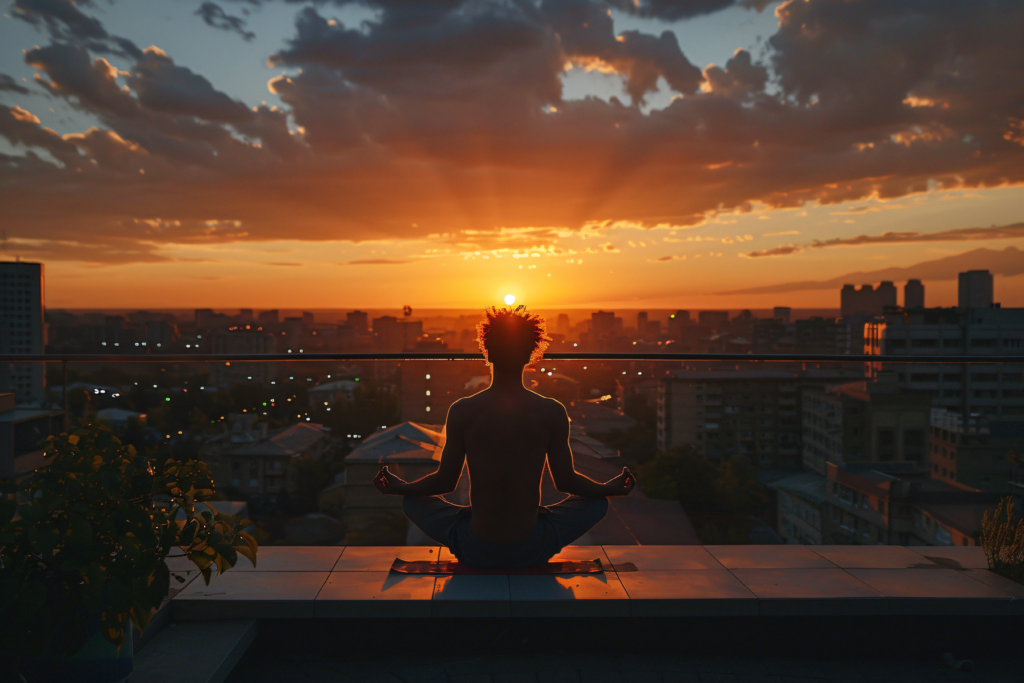प्राणायाम एक पुरानी सांस प्रक्रिया है जो भारत में योग प्रथाओं से शुरू होती है। इसमें विभिन्न शैलियों और लंबाई में अपनी सांस को नियंत्रित करना शामिल है। प्राणायाम के अभ्यास से मिलने वाले असंख्य चिकित्सीय लाभों के कारण हाल ही में इसे पश्चिमी दुनिया में और अधिक प्रसिद्धि मिली है।
प्राणायाम के बारे में:
योग के साथ-साथ प्राणायाम भी नियमित रूप से किया जाता है। इसे योग के चौथे अंग या उपांग के रूप में जाना जाता है। प्राणायाम को एक विज्ञान के रूप में देखा जाता है। यह माना जाता है कि आप अपनी सांसों को नियंत्रित करके अपने मस्तिष्क की शक्ति पर कुछ हद तक नियंत्रण रख सकते हैं।
प्राणायाम शब्द दो अलग-अलग शब्दों से बना है: प्राण और आयाम। प्राण का अर्थ है सांस, जबकि आयाम के विकास, लंबाई और वृद्धि सहित विभिन्न निहितार्थ हैं।
यौगिक मान्यताओं में, यह कल्पना की जाती है कि प्राणायाम अभ्यास के माध्यम से आप अपनी आंतरिक शक्ति, जिसे प्राण भी कहते हैं, पर कुछ नियंत्रण रखते हैं। योग में, प्राण अतिरिक्त रूप से प्रकाश, तीव्रता, आकर्षण और ऊर्जा की वास्तविक शक्तियों को संबोधित करता है। ये निहितार्थ इस क्षमता पर समुदाय करते हैं कि प्राणायाम अभ्यास को सांस नियंत्रण को बढ़ावा देने और मानसिक समृद्धि पर काम करने की आवश्यकता है। एक ठोस प्राणायाम श्वास भी आपके शरीर को विषहरण में सहायता करने के लिए स्वीकार किया जाता है।
प्राणायाम के फायदे:-
1. दबाव कम करता है:-
नियमित रूप से अभ्यास करने पर प्राणायाम चिंता की भावनाओं को कम करने में मदद कर सकता है।
हाल ही में एक रिपोर्ट में कोरोना वायरस महामारी के दौरान अत्याधुनिक मजदूरों को काटने के लिए प्राणायाम की व्यवहार्यता का निरीक्षण किया गया। विश्लेषकों ने पाया कि चार हफ्ते तक प्राणायाम का अभ्यास करने से चिंता की स्पष्ट भावना कम हो सकती है और मानसिक व्यक्तिगत संतुष्टि में सुधार हो सकता है।
2. वृद्धि की देखभाल:-
हममें से अधिकांश लोगों के लिए, साँस लेना क्रमादेशित है। हम वास्तव में इसके बारे में कल्पना के किसी भी विस्तार से सोचे बिना ऐसा करते हैं।
फिर भी, प्राणायाम के दौरान, आपको अपनी श्वास के बारे में पता होना चाहिए और यह कैसा महसूस होता है। आप इसी तरह अतीत या भविष्य के बजाय वर्तमान क्षण पर ध्यान केंद्रित करने पर काम करते हैं। इसे देखभाल के रूप में जाना जाता है।2017 के एक अध्ययन में, प्राणायाम का अभ्यास करने वाले छात्रों ने उन लोगों की तुलना में देखभाल का स्तर अधिक ऊंचा दिखाया, जिन्होंने प्राणायाम नहीं किया। इसी तरह के अध्ययनों ने गहन मार्गदर्शन के बेहतर स्तर भी दिखाए। यह प्राणायाम के शांत प्रभाव से संबंधित था, जो आपकी अधिक सावधान रहने की क्षमता को कायम रखता है।विशेषज्ञों ने अतिरिक्त रूप से उल्लेख किया कि प्राणायाम ऑक्सीजन निर्धारण को बढ़ाने में मदद कर सकता है, जो सिनैप्स को सक्रिय करता है। यह एकाग्रता और फोकस को और अधिक विकसित करके देखभाल में योगदान दे सकता है।
3. आराम की गुणवत्ता को और विकसित करता है:-
प्राणायाम जैसी गहन साँस लेने की प्रथाएँ आपको अपनी साँसों पर ध्यान केंद्रित करने और गहन विश्राम को आगे बढ़ाने की उम्मीद देकर, विश्राम दिशानिर्देश के साथ मदद कर सकती हैं। यह नींद संबंधी विकार वाले लोगों के लिए विशेष रूप से फायदेमंद हो सकता है।
हाल ही की एक रिपोर्ट के अनुसार, प्राणायाम ऑब्सट्रक्टिव रेस्ट एपनिया वाले व्यक्तियों में आराम की गुणवत्ता को और भी विकसित कर सकता है। इसके अलावा, जांच से पता चला कि प्राणायाम का अभ्यास करने से घरघराहट और दिन की सुस्ती कम हो गई, जिससे बेहतर गुणवत्ता वाले आराम के लिए लाभ की सिफारिश की गई।
4. फेफड़ों की क्षमता को और विकसित करता है:-
एक प्रकार की साँस लेने की गतिविधि के रूप में, प्राणायाम की धीमी, जानबूझकर साँस लेने से आपके फेफड़ों को मजबूत बनाने में मदद मिल सकती है।
2019 के एक अध्ययन से पता चलता है कि प्राणायाम फेफड़ों की क्षमता को बढ़ाकर स्वस्थ लोगों और प्रतियोगियों की प्रभावशीलता पर काम कर सकता है, खासकर उन लोगों में जो जोरदार आधारित खेलों का अभ्यास करते हैं।
5. सिगरेट की इच्छा कम हो जाती है:-
इस बात के कुछ प्रमाण हैं कि योगिक साँस लेने या प्राणायाम से उन लोगों में इच्छाएं कम हो सकती हैं जो धूम्रपान छोड़ने की कोशिश कर रहे हैं।
एक हालिया रिपोर्ट में पाया गया कि देखभाल आधारित योग श्वास ने धूम्रपान छोड़ने से संबंधित प्रतिकूल परिणामों को कम कर दिया है।
6. उच्च रक्तचाप को कम करता है:-
उच्च रक्तचाप, या उच्च रक्तचाप, वह बिंदु है जहां आपका परिसंचरण तनाव दुर्भाग्यपूर्ण स्तर पर पहुंच जाता है। यह कोरोनरी बीमारी और स्ट्रोक जैसी कुछ संभावित गंभीर बीमारियों के लिए जोखिम पैदा करता है।
तनाव उच्च रक्तचाप के लिए एक महत्वपूर्ण जुआ कारक है। प्राणायाम विश्राम को आगे बढ़ाकर इस जुआ को सीमित करने में सहायता कर सकता है।एक हालिया रिपोर्ट में पाया गया कि प्राणायाम मूल रूप से सिस्टोलिक पल्स को कम कर सकता है। अपनी सांस लेने पर ध्यान केंद्रित करने से आपके संवेदी तंत्र को शांत करने में मदद मिल सकती है, जो इस प्रकार आपकी दबाव प्रतिक्रिया और उच्च रक्तचाप के खतरे को कम करने में मदद कर सकता है।
भारतीय श्वास: 8 प्रकार की प्राणायाम श्वास रणनीतियाँ और उनके लाभ:-
आसन के रूप में योग के लिए जितना महत्वपूर्ण भारतीय श्वास है। प्राणायाम सांस लेने की रणनीतियों को आपकी भलाई के लिए उनके फायदों के साथ यहां चित्रित किया गया है।
1. दीर्घ प्राणायाम:-
दीर्घ प्राणायाम एक योगिक श्वास क्रिया है जिसमें पूरे श्वसन ढांचे का उपयोग करते हुए फेफड़ों को उतना भरना शामिल है जितना अपेक्षित हो। यह शब्द संस्कृत के दीर्घ से आया है, जिसका अर्थ है “लंबा”; प्राण, “जीवन शक्ति” को दर्शाता है; और यम, जिसका अर्थ है “प्रतिबंध,” या आयमा, जिसका अर्थ है “विस्तृत करना” या “बाहर निकालना।” यह योगिक साँस लेने की गतिविधियों में सबसे आवश्यक है और इसमें अन्य साँस लेने की प्रथाओं को शामिल किया जाता है।
दीर्घ प्राणायाम का अभ्यास करने के लिए, सीधी रीढ़ और मध्य भाग जो संकुचित न हो, एक अनुकूल मुद्रा या स्थिति में बैठें। सांस अंदर लेने पर सांस श्रोणि से कंधों तक ऊपर उठती है और सांस बाहर छोड़ने पर पीछे की ओर अनुरोध छोड़ती है।
दीर्घ प्राणायाम मध्य भाग को खोलने से शुरू होता है, जो सांस लेने पर इस और उस तरफ फैलता है। श्रोणि और मध्य क्षेत्र भरने के बाद, जैसे ही सांस भरती है, छाती गुप्त रूप से बढ़ती है, फिर, उस बिंदु पर, कॉलर की हड्डियां ऊपर उठती हैं और जैसे-जैसे सांस उस क्षेत्र में भरती है, वैसे-वैसे विस्तार करें। जब फेफड़े भर जाते हैं, तो योगी नाक के माध्यम से थोड़ी अधिक हवा अंदर लेता है, फिर, सांस लेने के बदले में फेफड़ों के शीर्ष बिंदु से मध्य भाग तक सांस छोड़ता है, और अंत में सांस लेता है। सारी हवा को खत्म करने के लिए।
इस प्राणायाम विधि को यह नाम इसलिए मिला क्योंकि जब आप इसका अभ्यास करते हैं, तो आप मध्य क्षेत्र के तीन अलग-अलग हिस्सों में प्रभावी ढंग से सांस ले रहे होते हैं। यह संभवतः शौकीनों के लिए सबसे अच्छा प्राणायाम है, क्योंकि यह आपको अपने फेफड़ों को ताकत देने और सोच-समझकर आराम करने की आदत डालता है।
अवस्था:-
- अपनी पीठ के बल अनुकूल स्थिति में बैठ जाएं
- पेट में श्वास लें, उसे श्वास के साथ बढ़ते हुए देखें
- जब आपको लगे कि यह भर गया है, तो पसलियों की सीमा को भरने के लिए अधिक सांस लें
- फिर, उस समय, थोड़ा सा और अंदर आने दें और छाती को भर दें
- अपनी ऊपरी छाती से शुरुआत करते हुए इत्मीनान से सांस छोड़ना शुरू करें
- फिर, उस समय, पसली की सीमा से मुक्ति मिलती है
- इसके अलावा, अंत में, हवा को मध्य भाग से जाने दें
- एक चक्र पूरा करने के बाद, अन्य 10-20 साँसें जारी रखें
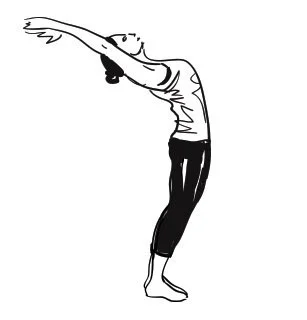
दीर्घा प्राणायाम के लाभ:-
1. ध्यान:-
दीर्घ प्राणायाम, किसी अन्य प्रकार की साँस लेने की रणनीति के समान, दिमागीपन का निर्माण करने के लिए है। यह प्रशिक्षण को संज्ञानात्मक स्तर पर लेता है, जो मौलिक है, और आसन और चिंतन अभ्यास का समर्थन करता है। सचेतनता के साथ, व्यक्ति सामान्यतः अधिक लाभ प्राप्त करेगा।
2. दिशानिर्देश:-
श्वसन प्रणाली नियंत्रित हो जाती है, जिससे पूरा चक्र पूरी सजगता के साथ समकालिक हो जाता है। श्वास प्रणाली के इस प्रकार के दिशानिर्देश जब दोबारा दोहराए जाते हैं, तो यह सामान्य श्वास के रोजमर्रा के पैटर्न के लिए आवश्यक हो जाता है जो मस्तिष्क को शांत और सक्रिय रखने में मदद करता है।
3. ऊर्जा/प्राण:-
आसन (योग प्रस्तुत) अभ्यास के दौरान, सांस लेने की सजगता के साथ-साथ, ऊर्जा या प्राण प्रवाह अवरुद्ध चैनलों को साफ करने के अनुसार बढ़ता है। इस प्रकार की सचेतनता दीर्घ प्राणायाम के सामान्य कार्य से प्राप्त की जा सकती है।
4. चिंता और तनाव:-
थ्री सेक्शन ब्रीथ का दोहराया अभ्यास इस हद तक शांत माना जाता है कि यह बेचैनी और चिंता की भावनाओं को काफी हद तक कम कर देता है, जिससे लगातार जमीन पर बने रहने का एहसास होता है। यह चिंता और तनाव के स्तर पर नियंत्रण के साथ-साथ निश्चितता भी प्रदान करता है।
5. संवेदी तंत्र:-
इस प्रकार सांस लेने की क्रिया शरीर की संवेदी प्रणाली के लिए वास्तव में उपयोगी साबित होती है। विचारशील संवेदी प्रणाली (अस्तित्व) और पैरासिम्पेथेटिक संवेदी प्रणाली (रक्त, अवशोषण, सुरक्षित ढांचे आदि का प्रबंधन) को शांत और प्रभारी रखते हुए एनिमेटेड किया जाता है। एक शांत संवेदी प्रणाली अच्छे स्वास्थ्य का समर्थन करती है और नियंत्रित मस्तिष्क की गारंटी देती है।
5. आसन एवं चिंतन:-
दीर्घ प्राणायाम का कार्य जब योग बैठक की शुरुआत में किया जाता है, तो शरीर को आसन अभ्यास के लिए तैयार करने में सहायता मिलती है और जब योग बैठक के अंत में किया जाता है, तो मानस को प्रतिबिंब के लिए तैयार करता है। इसके बाद, समान कार्य शरीर और मानस दोनों के लिए कुछ मौलिक लाभ रखता है।
2. शीतली प्राणायाम
सीतली प्राणायाम एक योगिक श्वास क्रिया है जिसका उद्देश्य मस्तिष्क को शांत करना और शरीर को ठंडा करना है। यह शब्द संस्कृत, सीताली से आया है, जिसका अर्थ है “ठंडा करना” या “राहत देना”; प्राण, जिसका अर्थ है “जीवन शक्ति”; और अयामा, जिसका अर्थ है “विस्तार।” सीताली प्राणायाम का अभ्यास करने के लिए, जीभ को घुमाया जाता है और उसके बाद जीभ के माध्यम से सांस को एक तिनके की तरह खींचा जाता है।
योग में, आसन अभ्यास के बाद मस्तिष्क और आंतरिक गर्मी के स्तर को नियंत्रित करने के लिए शीतली प्राणायाम का उपयोग किया जा सकता है। यह तपती जलवायु में विशेष रूप से सहायक है। पित्त दोष अनियमितता के उपचार के रूप में आयुर्वेद की पारंपरिक भारतीय चिकित्सा के विशेषज्ञों द्वारा शीतली प्राणायाम का भी सुझाव दिया जाता है। पित्त दोष शरीर का जैव-घटक है जो पाचन, ऊर्जा निर्माण और अवशोषण को नियंत्रित करता है।
यह असाधारण रूप से पुनर्जीवित करने वाली सांस लेने की प्रक्रिया है, इसलिए इसका नाम ‘कूलिंग ब्रीथ’ रखा गया है। मैं इसे पूरे वसंत ऋतु में करना पसंद करता हूँ।
अवस्था:-
- एक आरामदायक, पैर के ऊपर पैर की स्थिति में बैठें
- तैयार होने के लिए कुछ गहरी साँसें लें और छोड़ें
- अपनी जीभ को O आकार में घुमाएं, इसे अपने होठों से बाहर रखें
- धीरे-धीरे मुंह से सांस लें
- अपनी सांस रोकें और जालंधर बंद (जबड़े का ताला) का अभ्यास करें।
- कुछ देर बाद नाक से सांस छोड़ें
- जब तक आप 8 और 15 चक्रों की सीमा में नहीं पहुंच जाते, तब तक दोहराते रहें
- शोध से पता चला है कि जब योग के दौरान इस ठंडी सांस विधि पर काम किया जाता है तो तनाव कम करने में मदद मिल सकती है।
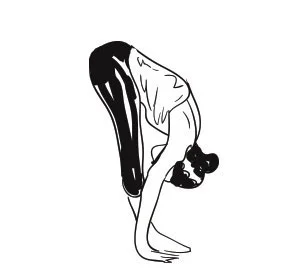
शीतली प्राणायाम के लाभ:-
- शीतली प्राणायाम जीभ, मुंह और गले से जुड़ी बीमारियों में लाभकारी है।
- तिल्ली के रोगों में यह अत्यंत लाभकारी है।
- बुखार और सीने में जलन में सहायक।
- हाई बी.पी. को नियंत्रित करता है।
- पित्त संबंधी रोगों में लाभकारी।
- यह खून को साफ करता है।
- आंतरिक गर्मी के स्तर को ठंडा करने के लिए सर्वोत्तम।
- नींद की कमी की समस्या से जूझने के लिए सर्वश्रेष्ठ।
- यह मानस को शांत करता है, और यह एक सम्मोहक दबाव निवारक है।
- यह मानते हुए कि हमारा मानस शांत है, हम निस्संदेह आक्रोश और तनाव का प्रबंधन कर सकते हैं।
- अतिअम्लता में व्यवहार्य।
3. नाड़ी शोधन
नाड़ी को धड़कन कहा जाता है और शोधन का तात्पर्य सफाई से है। इसलिए नाड़ियों को शुद्ध करने के लिए इस प्राणायाम का प्रयोग पुराने समय से ही किया जा रहा है। कहा जाता है कि भारतीय ऋषि-मुनि खुद को मजबूत बनाए रखने के लिए ऐसी योगाभ्यास किया करते थे। मूल शब्दों में, नाड़ी शोधन प्राणायाम को स्थानापन्न नासिका श्वास क्रिया कहा जाता है, जिसमें व्यक्ति को एक नासिका छिद्र से सांस लेनी होती है, सांस को रोकना होता है और बाद में दूसरे नासिका छिद्र से सांस छोड़नी होती है। मानव शरीर में नाड़ियां सरल ऊर्जा चैनल हैं। नाड़ी शोधन प्राणायाम सांस लेने का एक कोर्स है जो इन ऊर्जा ढांचे को शुद्ध करने और बिना किसी रोक-टोक के काम करने में सहायता करता है और बाद में मस्तिष्क को शांत करता है। कुछ योगी नाड़ी शोधन प्राणायाम को अनुलोम-विलोम प्राणायाम भी कहते हैं।
यदि आप सक्रिय रूप से प्राणायाम के बारे में जानते थे, या स्वयं इसका अभ्यास करते थे, तो संभवतः यह वही है जिसके बारे में आपको बताया गया है। ‘स्थानापन्न नासिका श्वास’ के रूप में जाना जाने वाला यह प्राणायाम मानव अनुभव के तीन दोषों: संपूर्ण स्व: में संतुलन लाने में सहायता करता है।
अवस्था:-
- पैरों को मोड़कर आरामदायक स्थिति में बैठें
- अपने बाएँ हाथ को अपने बायीं ओर के घुटने पर रखें
- पूरी तरह से सांस छोड़ें
- अपनी दाहिनी नासिका बंद करने के लिए अपने दाहिने हाथ का उपयोग करें
- बाईं ओर से गहरी सांस लें
- अपनी अतिरिक्त उंगलियों से बायीं नासिका को बंद करें
- दाहिनी नासिका खोलें, पूरी तरह से सांस छोड़ें
- दाहिनी नासिका से सांस लें, फिर बंद कर लें
- बाईं ओर खोलें, पूरी तरह से सांस छोड़ें
- यह एक चक्र है; कई बार पुनः प्रयास करें
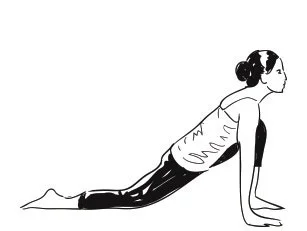
नाड़ी शोधन प्राणायाम के लाभ:-
- मन को शांत करने और ध्यान केंद्रित करने के लिए शानदार सांस लेने की रणनीति।
- हमारा मानस अतीत पर विलाप करना या उसका गुणगान करना जारी रखता है और भविष्य में क्या होगा इसके बारे में बेचैन हो जाता है। नाड़ी शोधन प्राणायाम – मानस को वर्तमान क्षण में वापस ले जाने में सहायता करता है।
- अधिकांश परिसंचरण और श्वसन संबंधी समस्याओं के लिए उपचारात्मक रूप से काम करता है।
- मस्तिष्क और शरीर में एकत्रित दबाव को वास्तव में डिस्चार्ज करता है और आराम करने में सहायता करता है।
- दिमाग के ग्लोब के बाएँ और दाएँ हिस्सों को मिलाता है, जो हमारे चरित्र के समझदार और घरेलू पक्षों से संबंधित है।
- नाड़ियों को नष्ट और संतुलित करता है – विनीत ऊर्जा चैनल, इस तरह शरीर के माध्यम से प्राण (जीवन शक्ति) की सुचारू प्रगति की गारंटी देता है।
- आंतरिक ताप स्तर को बनाए रखता है।
4. उज्जयी प्राणायाम
उज्जायी प्राणायाम, जिसे विजय की सांस भी कहा जाता है, योग अभ्यास में व्यापक रूप से उपयोग किया जाने वाला प्राणायाम है। उज्जयी संस्कृत के उपसर्ग उद से आया है, और यह “दासता” या “प्रतिबंधित” के साथ-साथ “ऊर्ध्वाधर” और “बढ़ने” का प्रतीक है। यह उपसर्ग जी धातु से जुड़ा है, और इसका अर्थ है “जीतना” या “सफलता प्राप्त करना।” कुल मिलाकर, उज्जायी प्राणायाम दासता से स्वतंत्रता प्राप्त करने से जुड़ा है। चूँकि यह गले के पिछले हिस्से में थोड़ी सी कसक के साथ किया जाता है, यह लक्ष्य उज्जायी अभ्यास के भौतिक और गहन दोनों भागों को संबोधित करता है। यह प्राणायाम गहन रूप से शांत करने वाला, धीरे से गर्म करने वाला, तीनों दोषों में से प्रत्येक के लिए समायोजित करने वाला और अधिकांश के लिए उपयुक्त है। किसी को भी रिहर्सल करने के लिए.
अवस्था:-
- किसी अनुकूल स्थिति से शुरुआत करें
- अपने मुँह से साँस लें
- अपने गले के पिछले हिस्से को सिकोड़ें (कल्पना करें कि आप दर्पण को धुंधला करने का प्रयास कर रहे हैं)
- फिर, उस समय, अपना मुंह बंद कर लें
- गले को सिकोड़कर नाक से सांस लेते रहें
- यह एक चक्र है; पाँच से दस चक्र तक चलते रहें
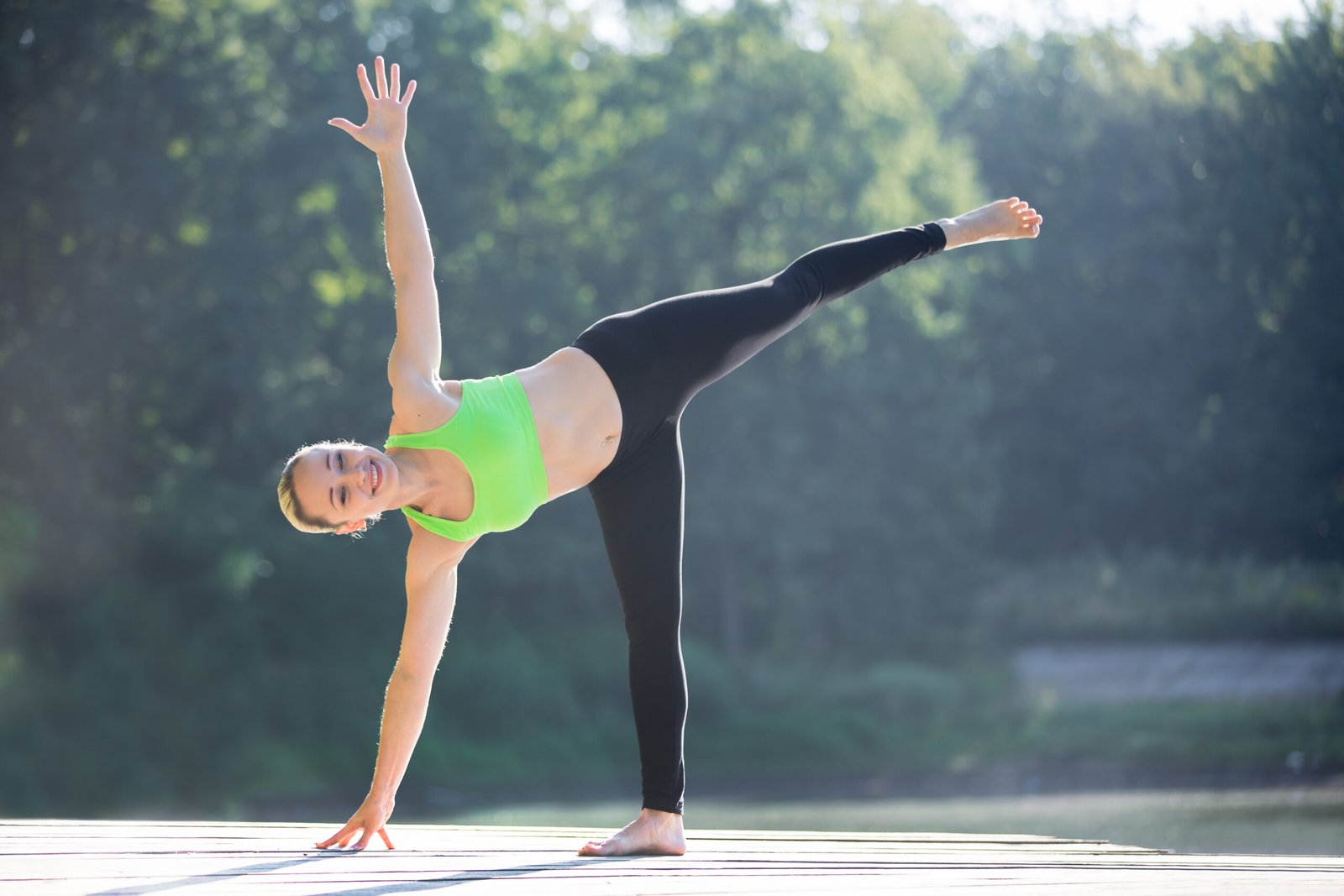
उज्जयी प्राणायाम के लाभ:-
तार्किक परीक्षाओं से पता चलता है कि उज्जयी पूरे कार्डियोरेस्पिरेटरी और संवेदी तंत्र को प्रभावित करती है। यह तनाव, पीड़ा और निराशा की संवेदनाओं को दूर करता है और मानस और शरीर को शांत करने में मदद करता है। उज्जायी के ऐसे अनगिनत फायदे हैं, जो एक बुनियादी अभ्यास को जबरदस्त लाभ प्रदान करते हैं। उज्जायी सांस का अभ्यास करने के कारण आपको निम्नलिखित कुछ फायदे मिल सकते हैं:
- सांस की गति को वापस आसान बनाता है, जिससे जीवन काल का विकास होता है
- नाड़ियों (शरीर के विनीत ऊर्जा चैनल) को शुद्ध और पुनर्जीवित करता है
- मस्तिष्क शरीर को नए प्राण (अनिवार्य जीवन शक्ति) से भर देता है
- मानसिक स्पष्टता और एकाग्रता को बढ़ाता है
- प्रतिरोधी ढांचे का समर्थन करता है
- संवेदी तंत्र को राहत और पुनर्स्थापित करता है
- ध्वनि आराम को बढ़ाता है, घरघराहट को नियंत्रित करता है
- थायराइड संबंधी समस्याओं में सहायता करता है, उच्च रक्तचाप और हृदय संबंधी परेशानियों को नियंत्रित करने में सहायता करता है
- गायकों की आवाज की प्रकृति को और अधिक विकसित करता है
5. भ्रामरी प्राणायाम
भ्रामरी प्राणायाम, वास्तविक अर्थ में, “मधुमक्खी की सांस”, एक शांतिपूर्ण और मजबूत योगिक सांस लेने की रणनीति है जो बड़बड़ाती हुई शहद की मक्खी का उच्चारण करती है। यह अभ्यास दबाव, पीड़ा, आक्रोश, घबराहट, चिंता को कम करने और बेहतर आराम को बढ़ावा देने के लिए पूरी तरह से प्रासंगिक है। यह सुनने के संबंध में समझ विकसित करने में भी मदद कर सकता है। अभ्यास करने के लिए, व्यक्ति सुखासन में बैठ सकता है, तीन अंगुलियों से आंखें बंद कर सकता है, अंगूठे को ट्रैगस पर रख सकता है और शनमुखी मुद्रा बना सकता है। यह बड़बड़ाहट ध्वनि ध्यान केंद्रित करती है और मानस और शरीर के बीच संतुलन बनाती है। भ्रामरी प्राणायाम आंतरिक पहचान को पोषित करता है और शौकीनों के लिए आदर्श रूप से उपयुक्त है। हमें प्रशिक्षण के फायदे, प्रकार, बीमा और युक्तियों की जांच करनी चाहिए।
यह नाम आपको एक स्मार्ट विचार प्रदान करता है कि साँस को कैसे अभ्यास किया जाना चाहिए – यह एक कुड़कुड़ाने वाली शहद मधुमक्खी की तरह प्रतीत होना चाहिए!
अवस्था:-
- एक अनुकूल स्थिति का पता लगाएं.
- अपनी उंगलियों और अंगूठे से अपने कान और आंखें बंद कर लें.
- गहराई से सांस लें.
- फिर, उस समय शहद की मक्खी की तरह गुंजन की आवाज निकालते हुए इत्मीनान से सांस छोड़ें.
- आप ‘ओम’ ध्वनि का उच्चारण भी कर सकते हैं, यह कल्पना करना अधिक आसान है.
- जब भी आपने सांस पूरी कर ली है, आप पूरा चक्कर लगा चुके हैं.
- 5-10 मिनट तक जारी रखें.
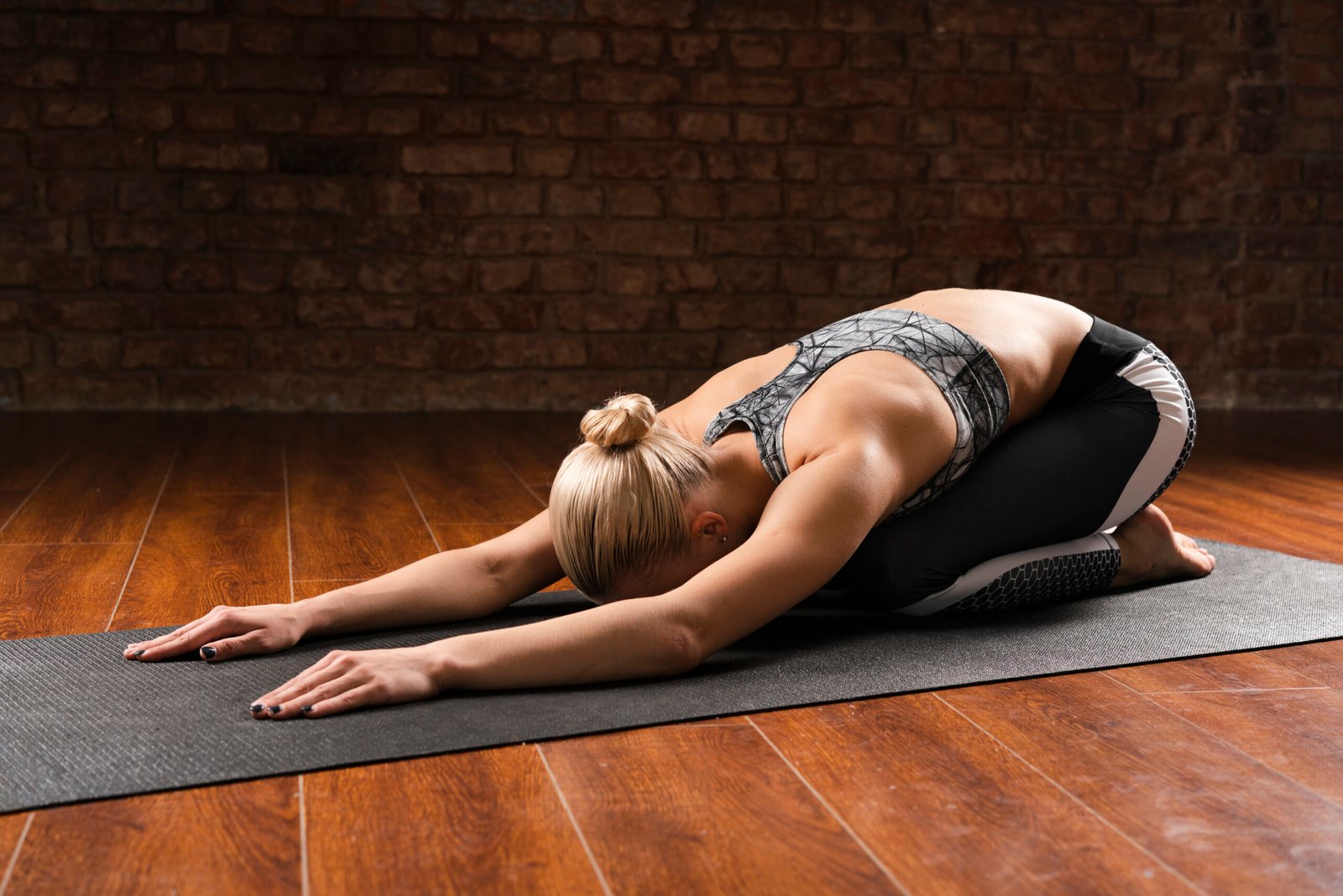
भ्रामरी प्राणायाम के लाभ:-
1. आराम की गुणवत्ता में सुधार:-
भ्रामरी प्राणायाम को अपने रात्रि कार्यक्रम में शामिल करने से आपको अधिक आरामदायक और गहरा आराम मिल सकता है। मस्तिष्क को ढीला करके, यह नींद संबंधी विकार से संबंधित दुष्प्रभावों को सफलतापूर्वक कम करता है, जिससे शांत आराम मिलता है।
2. श्रवण पर कार्य:-
भ्रामरी प्राणायाम गुंजन ध्वनि पर केन्द्रित है, जो कानों को स्फूर्ति प्रदान करती है। यह प्रशिक्षण सुनने योग्य विवेक को विस्तारित कर सकता है।
महिलाओं में मानसिक स्वास्थ्य को बनाए रखता है: यह प्रशिक्षण पुनर्योजी ढांचे से जुड़ी समस्याओं को कम करने में मदद करता है। यह स्त्री चक्रों को निर्देशित करने और छिटपुट मासिक धर्म से जुड़े मुद्दों को संबोधित करने के लिए रसायनों को नियंत्रित करता है। यह इसी तरह स्त्री ऐंठन और स्त्री मासिक धर्म से संबंधित परेशानी की पुनरावृत्ति को भी कम कर सकता है।
3. नाक बंद होना:-
भ्रामरी प्राणायाम का नियंत्रित सेवन नाक की रुकावट को कम करने में मदद कर सकता है। यदि आपको संवेदनशीलता, साइनस की समस्या या सर्दी है तो यह आसन आपकी असुविधा को कम करने में मदद कर सकता है।
4.गले का बढ़ना:-
भ्रामरी प्राणायाम के दौरान निकलने वाली हल्की बड़बड़ाहट की ध्वनि गले को राहत पहुंचाती है। यह गले में परेशानी को कम करने में मदद कर सकता है।
5.बेचैनी को कम करता है:-
यह योग क्रिया एक प्रेशर बस्टर की तरह व्यवहार करती है, जिससे शरीर से तनाव मुक्त होता है। इसके जरिए वास्तव में तनाव के दुष्प्रभावों पर काबू पाया जा सकता है। इस योग के शांत प्रभाव एक अधिक निर्मित और समायोजित परिप्रेक्ष्य को जोड़ते हैं।
6. अनुलोम-विलोम प्राणायाम
अनुलोम-विलोम प्राणायाम एक योग साँस लेने की गतिविधि है जिसमें रुक-रुक कर अंदर आने वाली सांसों की प्रगति शामिल है, जिसके बाद रुकने के साथ रुक-रुक कर निकलने वाली साँसों की प्रगति शामिल है। यह नाम संस्कृत के “वी” से आया है, जिसका अर्थ है “विरुद्ध” या “विपरीत”; और लोमा, और वह “बाल” का प्रतीक है। इस प्रकार, अनुलोम-विलोम का अर्थ “अपेक्षित के विपरीत” या “सामान्य प्रवाह के विरुद्ध” है। प्राणायाम सांस नियंत्रण की क्रिया है जिसे पूरे शरीर में ऊर्जा का प्रबंधन करने के लिए अपनाया जाता है। यह संस्कृत, प्राण, या जीवन शक्ति ऊर्जा, और यम से आता है, और यह “सीमा” या “नियंत्रण” का प्रतीक है।
अनुलोम-विलोम विलोमा प्राणायाम का अभ्यास आम तौर पर पीछे की ओर झुककर ऊपर की ओर करके किया जाता है। फेफड़ों की 33% क्षमता से सांस लेने से शुरुआत करें, फिर कुछ सेकंड के लिए रुकें। एक और तिहाई सांस लें, एक बार फिर रुकें और तब तक सांस लें जब तक फेफड़े भर न जाएं। साँस छोड़ने पर उदाहरण दोहराने से पहले रुकें। योगी के फेफड़ों की सीमा के आधार पर रुकने की संख्या बढ़ाई जा सकती है। विलोम प्राणायाम का अभ्यास केवल साँस छोड़ने पर या केवल अंदर आने वाली साँस पर रुककर भी किया जा सकता है।
इस प्राणायाम श्वास प्रक्रिया में एक चक्कर भी शामिल है। इसे दो प्रकारों में विभाजित किया गया है: अंदर आती हुई सांस को रोकना और सांस को छोड़ना बंद करना।
अवस्था:-
- एक अनुकूल स्थिति में आराम करें और आराम करें
- कुछ सेकंड के लिए सांस लें और फिर रुकें
- दो सेकंड के विश्राम के बाद अंदर की सांस को फिर से शुरू करें
- इस चक्र को तब तक दोहराएँ जब तक कि आपके फेफड़े भर न जाएँ
- इत्मीनान से सांस छोड़ें
- वह चक्र कुल है; तीन से पांच मिनट तक दोबारा दोहराएं
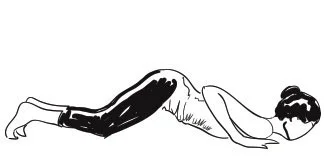
अनुलोम-विलोम प्राणायाम के लाभ:-
सांस लेने में रुकावट का मुख्य कारण फेफड़ों को मजबूत करना और सांस को दिमाग से जोड़ना है। आपके द्वारा अभ्यास की जाने वाली विविधता के आधार पर लाभ भिन्न होते हैं। विलामा प्राणायाम के कुल मिलाकर स्वीकृत लाभ इस प्रकार हैं :-
- सांस पर नियंत्रण और फेफड़ों की सीमा को बढ़ाता है
- इसके अलावा सांस की सजगता और फोकस विकसित होता है
- शरीर में प्राण के विकास को बढ़ाता है
- मस्तिष्क को शांत करता है और शरीर को ठंडक देता है
- घबराहट में राहत देता है
- पीएमएस के दौरान उपयोगी हो सकता है
कुछ मामलों में सुझाव दिया गया है कि सांस लेने में रुकावट न्यूमोनिक क्षमता पर काम करती है और पैरासिम्पेथेटिक संवेदी प्रणाली को शुरू करती है। यह बाद में मस्तिष्क और शरीर को महत्वपूर्ण रूप से प्रभावित कर सकता है। हालाँकि, ये लाभ तभी प्रभावी होंगे जब आप इसमें सुधार करेंगे, तुरंत नहीं।
7. कपालभाति प्राणायाम
कपालभाति प्राणायाम एक योगिक श्वास अभ्यास है जिसे क्रिया, या आंतरिक निस्पंदन अभ्यास माना जाता है। यह शब्द संस्कृत के कपाल से लिया गया है, जिसका अर्थ है “खोपड़ी” और भाति, जिसका अर्थ है “चमकना।” कपालभाति प्राणायाम का अभ्यास करने के लिए, योगी एक ऐसी स्थिति की अपेक्षा करते हैं जहां पेट और छाती सीमित न हों, उदाहरण के लिए, वीरासन या सुखासन में। . विचार को निचले मध्य भाग में लाया जाता है और साथ ही हाथों को निचले मध्य क्षेत्र पर रखा जाता है। सांस अंदर लेने पर निचला मध्य क्षेत्र सिकुड़ता है और सांस बाहर छोड़ने पर सांस तेजी से बाहर निकलती है। इसे 60 सेकंड में जितनी बार संभव हो उतनी बार दोहराया जाता है। उच्च स्तरीय योगी इस प्राणायाम के विभिन्न दौरों को पूरा कर सकते हैं। कपालभाति प्राणायाम को मध्यम से अत्याधुनिक साँस लेने की रणनीति के रूप में देखा जाता है। यह आंतरिक अंगों को साफ करने, तंत्रिका तंत्र और संचार प्रणाली को उत्तेजित करने और पाचन को बेहतर बनाने के लिए जाना जाता है। इसके अलावा, कई योगी नाड़ियों को साफ़ करने के लिए इस प्राणायाम विधि का अभ्यास करते हैं।
कपालभाति प्राणायाम शरीर में ऑक्सीजन की आपूर्ति को बढ़ाता है, जिससे मानसिक शांति और एकाग्रता में सुधार होता है। जैसा कि हठ योग विशेषज्ञों ने संकेत दिया है, कपालभाति तकनीक शरीर को शुद्ध करती है, सब कुछ समान होने पर।
शीतली प्राणायाम आपको ठंडा करने के बजाय, आप खुद को गर्म करने के लिए कपालभाति प्राणायाम अपना सकते हैं। इस प्राणायाम साँस लेने की रणनीति में अनिवार्य रूप से गहराई से अंदर की ओर सांस लेना और ज़ोर से साँस छोड़ना शामिल है। यह कुंडलिनी योग के अंदर एक विशिष्ट अभ्यास है।
अवस्था:-
- अपने हाथों को घुटनों के बल नीचे रखें, ध्यान अपनी आंत पर रखें
- दोनों नासिका छिद्रों से गहराई से सांस लें
- जोर से सांस छोड़ें (शुरू करने के लिए, आप अपने हाथों का उपयोग अपने पेट पर धीरे से दबाव डालने के लिए कर सकते हैं)
- फिर अंदर की सांस सामान्य रूप से होनी चाहिए
- साँस छोड़ने के आसपास केन्द्रित करें, अन्दर आती साँस को अलग रखना चाहिए
- शुरू करने के लिए, हर पल कुछ भी चक्र न होने दें, और यदि आप ऐसा करने से खुश हैं, तो आप धीरे-धीरे हर पल 95-105 चक्र तक बढ़ सकते हैं।
- एक चक्र एक साथ साँस छोड़ने और अंदर आने वाली साँस है; सबसे महत्वपूर्ण बात यह है कि इस प्रक्रिया को केवल दो या तीन मिनट के लिए ही करें
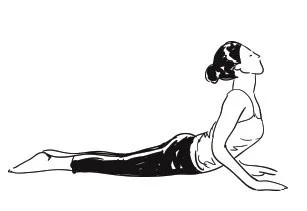
कपालभाति प्राणायाम के लाभ:-
कपालभाति के आपके शरीर और मानस के लिए विभिन्न फायदे हैं। उनमें से कुछ इस प्रकार हैं:
- कपालभाति प्राणायाम का अभ्यास करने से आपकी आंखों को शांति मिल सकती है और आपकी आंखों के नीचे काले घेरे खत्म हो सकते हैं।
- यह आपको तनाव मुक्त करता है और आपके दिमाग को रोशनी देता है।
- यह अपच, एसिडिटी और गैस को दूर करता है।
- यह आपके फेफड़ों की सीमा का विस्तार करता है और उनके लिए ताकत के क्षेत्र बनाता है।
- इसके अलावा निर्धारण और स्मृति का विकास होता है।
- यह अस्थमा और घरघराहट को ठीक कर सकता है।
- यह साइनसाइटिस को कम करता है।
- यह गंजापन रोकता है और असमय बालों को सफेद होने से रोकता है।
- यह अस्वस्थता को रोकता है और एंडोर्फिन के उत्पादन को बढ़ाता है, जिससे आप अच्छा महसूस करते हैं।
- यह आपकी त्वचा की मजबूती पर काम करता है और आपको शानदार चमक देता है।
- यह योगासन रक्त संचार को और विकसित करने में मदद करता है।
- यह प्रसंस्करण में मदद करता है।
- इस आसन का अभ्यास शरीर की चयापचय गति पर काम करने के लिए जाना जाता है, जिससे वजन घटाने में मदद मिलती है।
- यह तीव्रता पैदा करके और उन्हें घोलकर आपके शरीर से जहर और अपशिष्टों को खत्म करता है।
- यह योग आसन आपकी किडनी और लीवर की कार्यप्रणाली पर भी काम कर सकता है।
- यह अग्न्याशय को सक्रिय करके ग्लूकोज को कम करता है।
- यह आपके शरीर में कैल्शियम के स्तर को बढ़ाकर हड्डियों को मजबूत बनाता है।
- यह गर्भाशय फाइब्रॉएड को ठीक कर सकता है।
- यह आपके शरीर के ऊर्जा स्तर को बढ़ाता है।
- यह त्वचा के टूटने को ठीक कर सकता है और वैरिकाज़ नसों का इलाज कर सकता है।
- यह आपके शरीर की परिपक्व बातचीत को वापस डायल करता है।
- इस योगासन का अभ्यास करने से नींद संबंधी विकार भी ठीक हो सकता है।
8. भस्त्रिका प्राणायाम
भस्त्रिका प्राणायाम योग की संज्ञानात्मक श्वास प्रक्रियाओं में से एक है। भस्त्रिका एक संस्कृत अभिव्यक्ति है जिसका अर्थ है “गर्जना”। यह हठ योग साँस लेने की विधि शारीरिक और मनोवैज्ञानिक कल्याण को बढ़ावा देती है। आसन में प्रवेश करने के लिए, पद्मासन या रीढ़ की हड्डी को सीधा रखते हुए किसी भी अनुकूल स्थिति में शुरू करें। आंखें बंद हैं. कई बार जोर-जोर से सांस लें और छोड़ें। 15 से 20 सेकंड के लिए कुछ समय निकालें और दूसरे के लिए कई बार प्रयास करें। आमतौर पर भस्त्रिका सांसों की तीन श्रृंखलाओं को पूरा करने के बाद श्वास लें। ‘हाउल्स ब्रीथ’ को ‘आग की सांस’ (जैसा कि नीचे देखा गया है) से पहले प्रयास करना वास्तव में स्मार्ट हो सकता है, क्योंकि यह तुलनात्मक है लेकिन उतना कठिन नहीं है। मूलभूत अंतर यह है कि इस श्वास विधि में सांस अंदर लेना और छोड़ना दोनों शक्तिशाली हैं।
अवस्था:-
- आंखें बंद करके और रीढ़ सीधी करके पद्मासन (कमल) की स्थिति में बैठें
- अपनी नाक से गहराई से सांस लें
- फिर, उस समय, पेट को ‘साइफन’ करने के लिए उपयोग करते हुए, अपनी नाक के माध्यम से जोर से सांस छोड़ें।
- कई बार प्रभावी ढंग से सांस लें और छोड़ें (या जो भी अच्छा लगे)
- फिर, उस समय, गहरी सांस लें
- जितनी देर तक संभव हो सके सांस को रोककर रखें
- गहरी सांस छोड़ते हुए धीरे-धीरे सांस को बाहर निकालें
- पूरा चक्कर लगाने के बाद, आप सामान्य सांस लेते हुए आराम कर सकते हैं, फिर एक और तीन से पांच चक्रों के लिए आगे बढ़ सकते हैं
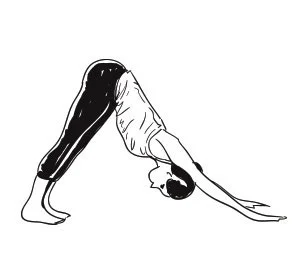
भस्त्रिका प्राणायाम के लाभ:-
1. दोष समायोजन प्रक्रिया:-
भस्त्रिका प्राणायाम विधि एक समायोजन विशेषज्ञ है जो शरीर के तीन दोषों: वात, पित्त और कफ को फिट करती है। शारीरिक हास्य को समायोजित करना रहस्यमय मुठभेड़ों के लिए स्वास्थ्य को आदर्श स्थिति में रखने का तरीका है।
2. पैरासिम्पेथेटिक सेंसरी सिस्टम को कायम रखता है:-
भस्त्रिका प्राणायाम का सही कार्य एक पैरासिम्पेथेटिक संवेदी प्रणाली के उन्नत अधिनियम के माध्यम से स्वायत्त संवेदी प्रणाली को समायोजित करता है जो मनोवैज्ञानिक अभिव्यक्ति है जो दबाव को निर्देशित करता है और बेहतर अंग कार्य को बढ़ावा देता है। भस्त्रिका प्राणायाम दिमाग को स्वस्थ रखने के लिए ऑक्सीजनेशन के लिए महत्वपूर्ण है।
भस्त्रिका प्राणायाम अभूतपूर्व मानसिक चिकित्सीय लाभ उत्पन्न करता है। यह इंजन को विकास से जुड़े केंद्रीय संवेदी तंत्र के हिस्से को तैयार करने में मदद करता है। मस्तिष्क से कोशिका संचार के माध्यम से शरीर के विकास के लिए इंजन प्रणाली जिम्मेदार है।
3. शारीरिक-मानस उत्प्रेरक:-
भस्त्रिका प्राणायाम एक विशिष्ट उत्प्रेरक है जो शरीर और मस्तिष्क को महत्वपूर्ण तरीके से सक्रिय करता है। जब भी आप सवारी कर रहे हों और ऊर्जा के स्तर में कमी आ रही हो, तो बिना किसी सीमा के ऊर्जा बैटरियों को फिर से सक्रिय करने के लिए इस तीव्र श्वास रणनीति का अभ्यास करें।
4. कष्ट के लिए वास्तव में बढ़िया:-
तनाव और निराशा से जूझ रहे व्यक्तियों के लिए यह अच्छी खबर है। भस्त्रिका प्राणायाम निराशा की अप्रिय बीमारी के इलाज की एक विशिष्ट और मजबूत प्रक्रिया मौजूद है। दवाओं के विपरीत एक विकल्प, यह सकारात्मक परिणाम प्राप्त करने के लिए चिंता संबंधी समस्याओं के प्रबंधन के लिए एक सुरक्षित तरीका है।

